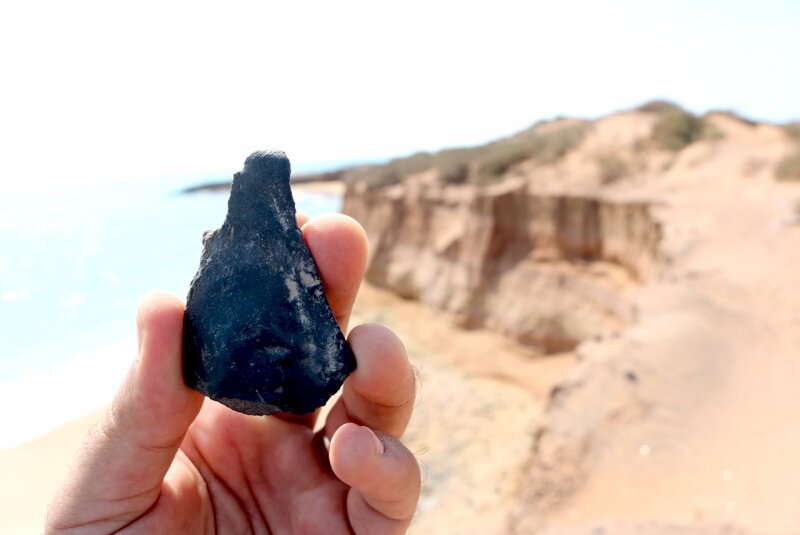Hunter-gatherers settled in southern Iranian island, new evidence suggests

TEHRAN – An archaeological investigation on Hormuz Island has found evidence that suggests a community of hunter-gatherers settled in the southern soil in the Middle Paleolithic era.
“A significant amount of stone tools that can be attributed to the Middle Paleolithic period, according to archaeological examinations, have recently been discovered during a documentation project conducted off the Chand-Derakht (“Several-Trees”) Beach on Hormuz Island,” CHTN quoted Iranian archaeologist Sepehr Zarei as saying on Tuesday.
Some of the discovered stone tools, which have been shaped using special techniques, are estimated to date back to the Middle Paleolithic period, said Zarei who led the survey.
“These new findings confirm the presence of Paleolithic hunter-gatherer groups on the island and indicate the importance of the Strait of Hormuz in Paleolithic archeology of the Persian Gulf and other southern coasts of Iran.”
Elsewhere in his remarks, the archaeologist said that further research on the site is a priority. “Preservation of this area and its ecological landscape and conducting more research in this part of the eastern coast of Hormuz Island is one of the priorities of the general directorate of Cultural Heritage, Tourism and Handicrafts of Hormozgan province.”
“Future research, including intensive surveying, systematic sampling, on-site excavations, and additional studies, will increase archaeologists' knowledge of the development of Paleolithic groups and the Persian Gulf connection to southern Iran and the Arabian Peninsula during the Pleistocene era.”
In addition to Chand-Derakht beach, the same evidence of Paleolithic settlements has been spotted on Qeshm Island of the Persian Gulf, he added.
Some of the discovered stone tools, which have been shaped using special techniques, are estimated to date back to the Middle Paleolithic period. A 2019 study published in the Journal of Human Evolution, suggests that Neanderthals were roaming over the Iranian Zagros mountain range sometimes between 40 to 70 thousand years ago.
Until the late 20th century, Neanderthals were regarded as genetically, morphologically, and behaviorally distinct from living humans. However, more recent discoveries about this well-preserved fossil Eurasian population have revealed an overlap between living and archaic humans.
Neanderthals lived before and during the last Ice Age of the Pleistocene in some of the most unforgiving environments ever inhabited by humans. They developed a successful culture, with a complex stone tool technology, that was based on hunting, with some scavenging and local plant collection. Their survival during tens of thousands of years of the last glaciation is a remarkable testament to human adaptation.
Zagros mountain range in southwestern Iran, extending northwest-southeast from the border areas of eastern Turkey and northern Iraq to the Strait of Hormuz, is about 990 miles (1,600 km) long and more than 150 miles (240 km) wide. It forms the extreme western boundary of the Iranian plateau, though its foothills to the north and west extend into adjacent countries.
According to Britannica, the oldest rocks in the Zagros range date to Precambrian time (that is, before 541 million years ago), and the Paleozoic Era rocks date to between 541 million and 252 million years ago are found at or near the highest peaks.
Most of the rocks in the mountain range, however, are limestone and shale from the Mesozoic Era (252 million to 66 million years ago) and the Paleogene Period (66 million to 23 million years ago). The range was primarily formed by orogenies (mountain-building episodes) driven by the movement of the Arabian Plate underneath the Eurasian Plate during the Miocene and Pliocene epochs (23 million to 2.6 million years ago).
AFM
Leave a Comment